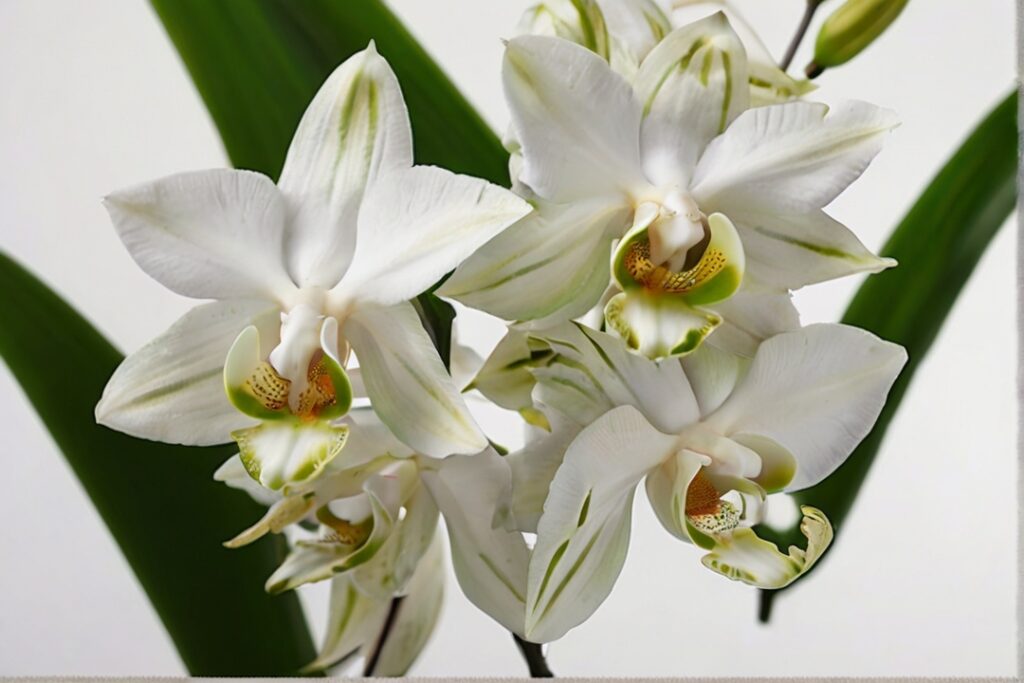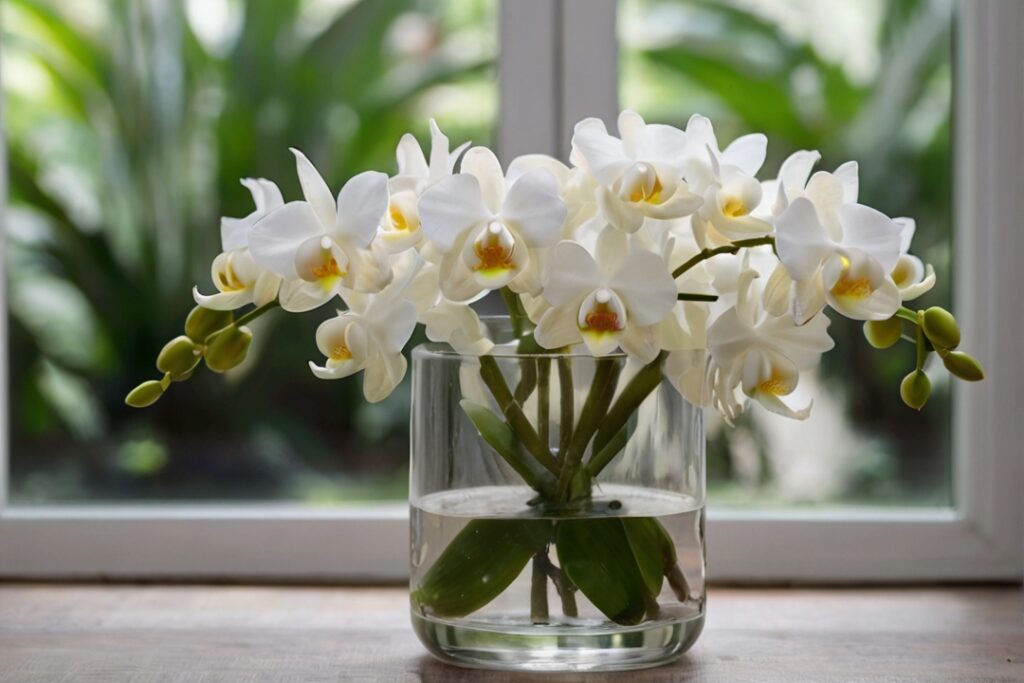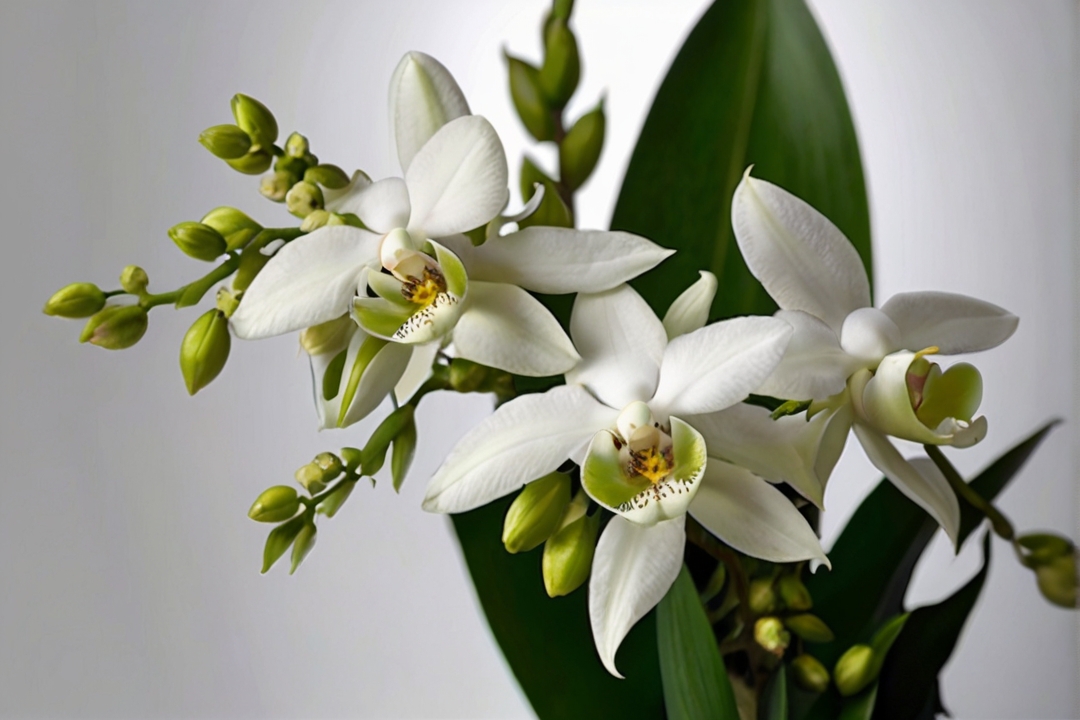White dendrobium orchids are a stunning and elegant addition to any home or garden. These beautiful flowers are known for their delicate white petals and vibrant green leaves. They are a popular choice among orchid enthusiasts due to their beauty and versatility.
However, caring for white dendrobium orchids can be a bit challenging, as they have specific requirements that need to be met in order for them to thrive. Understanding how to properly care for these orchids is essential in order to enjoy their beauty for years to come.
Table of Contents
- Understanding White Dendrobium Orchids
- Types of Dendrobium Orchids
- Factors to Consider Before Growing White Dendrobium Orchids
- Growing Dendrobium Orchids from Seed
- Choosing the Right Pot and Soil for White Dendrobium Orchids
- Watering White Dendrobium Orchids: Dos and Don'ts
- Fertilizing: Everything You Need to Know
- Pruning White Dendrobium Orchids: Tips and Techniques
- Dealing with Common Pests and Diseases
- Repotting: When and How to Do It
- Enjoying the Beauty of Your White Dendrobium Orchids
Understanding White Dendrobium Orchids

White dendrobium orchids, are native to Southeast Asia and can be found in countries such as Thailand, Vietnam, and Myanmar. These orchids are epiphytic, meaning they grow on other plants or trees rather than in the ground. They have long, thin stems with clusters of flowers that bloom from the nodes along the stem. The flowers themselves are typically white, although some varieties may have hints of pink or purple.
In their natural habitat, white dendrobium orchids grow in warm and humid conditions. They prefer bright but indirect light, as direct sunlight can scorch their leaves. These orchids also require good air circulation to prevent the growth of mold or fungus. There are several different types of white dendrobium orchids, each with its own unique characteristics and growing requirements.
Types of Dendrobium Orchids
- Dendrobium Phalaenopsis: Also known as the “Phalaenopsis-type dendrobiums,” these orchids typically have larger, rounder flowers and are commonly used in hybridization for their vibrant colors and long-lasting blooms.
- Dendrobium Kingianum: Native to Australia, these orchids are known for their hardiness and ability to tolerate a wide range of growing conditions. They produce clusters of small, fragrant flowers in various colors, including pink, purple, and white.
- Dendrobium Nobile: Originating from Southeast Asia, Dendrobium nobile orchids are characterized by their cane-like stems and clusters of fragrant flowers that bloom from the nodes along the stem. They come in a variety of colors, including white, pink, purple, and yellow.
- Dendrobium Lindleyi: Also known as the “Soft-Cane Dendrobium,” these orchids have soft, flexible stems and produce clusters of small, fragrant flowers in shades of white, yellow, and pink. They are native to Southeast Asia and require warm temperatures to thrive.
- Dendrobium Anosmum: Commonly known as the “Scentless Dendrobium,” these orchids are prized for their large, showy flowers and intense fragrance. Native to Southeast Asia, they produce clusters of flowers in shades of white, purple, and pink.
Factors to Consider Before Growing White Dendrobium Orchids
Before deciding to grow white dendrobium orchids, there are several factors that need to be taken into consideration.
Climate and Temperature
One of the most important factors is the climate and temperature requirements of these orchids. They thrive in warm temperatures between 65-85°F (18-29°C) during the day and slightly cooler temperatures at night.
Lighting
Another important factor is lighting. White dendrobium orchids require bright but indirect light. Placing them near a window with filtered sunlight or using artificial grow lights can help provide the right amount of light for these orchids.
Humidity
Humidity levels are also crucial for the health of white dendrobium orchids. They prefer humidity levels between 50-70%. If the air in your home is dry, you can increase humidity by placing a tray of water near the orchids or using a humidifier.
Air Circulation
Lastly, air circulation is essential for preventing the growth of mold or fungus on white dendrobium orchids. Make sure to provide adequate air circulation by placing the orchids in a well-ventilated area or using a fan to circulate the air.
Growing Dendrobium Orchids from Seed

Though this process is not easy and is generally only successfully replicated in labs due to the complex nature and controlled conditions required by these orchids, you can always give it a try:
- Seed Collection: Dendrobium orchid seeds are typically collected from mature seed pods once they have ripened. The pods are carefully harvested and allowed to dry before extracting the tiny seeds.
- Sterilization: Orchid seeds are highly susceptible to fungal and bacterial infections, so it’s essential to sterilize both the seeds and the growing medium before sowing. This can be done using bleach or hydrogen peroxide solutions.
- Sowing: Orchid seeds are sown onto a sterile growing medium, such as agar or a specialized orchid seedling mix, in a sterile environment. The seeds are then sealed in a container to maintain high humidity levels and prevent contamination.
- Germination and Seedling Care: Orchid seeds can take several weeks to months to germinate, depending on the species and growing conditions. Once the seedlings have emerged, they require careful monitoring and maintenance of temperature, humidity, and light levels until they are large enough to be transplanted into individual pots.
- Growth and Development: Growing dendrobium orchids from seed is a long-term process that requires patience and dedication. As the seedlings grow, they will require regular watering, fertilization, and repotting as they outgrow their containers. It may take several years for orchids grown from seed to reach maturity and produce flowers.
Choosing the Right Pot and Soil for White Dendrobium Orchids
Choosing the right pot and soil for white dendrobium orchids is crucial for their overall health and well-being. When it comes to pots, there are several options to choose from. Clay pots are a popular choice as they provide good drainage and allow for air circulation around the roots. Plastic pots are also a viable option, especially if you live in a dry climate as they retain moisture better than clay pots.
In terms of soil, white dendrobium orchids prefer a well-draining mix that allows water to flow freely through the roots. A common mix for these orchids is a combination of bark, perlite, and sphagnum moss. This mix provides good drainage while retaining some moisture to keep the roots hydrated.
It’s important to note that white dendrobium orchids are epiphytic, meaning they do not grow in soil in their natural habitat. Instead, they attach themselves to trees or other plants and absorb nutrients and moisture from the air and rain. Replicating this environment as closely as possible is key to their success.
Watering White Dendrobium Orchids: Dos and Don’ts
Proper watering is essential for the health of white dendrobium orchids. These orchids prefer to be kept slightly on the drier side, so it’s important to avoid overwatering. Watering once a week is usually sufficient, but this can vary depending on factors such as temperature, humidity, and potting mix.
When watering white dendrobium orchids, it’s important to use water that is at room temperature or slightly warmer. Cold water can shock the roots and cause damage to the plant. It’s also important to use water that is free from chemicals such as chlorine or fluoride, as these can be harmful to the orchids.
One common mistake when it comes to watering white dendrobium orchids is overwatering. These orchids are susceptible to root rot if they are kept in soggy conditions for too long. To avoid overwatering, make sure the potting mix has dried out before watering again. You can test the moisture level by sticking your finger about an inch into the mix. If it feels dry, it’s time to water.
Fertilizing: Everything You Need to Know
Fertilizing white dendrobium orchids is important for providing them with the necessary nutrients for growth and blooming. There are several types of fertilizers that can be used for these orchids, including balanced orchid fertilizers, which contain equal amounts of nitrogen, phosphorus, and potassium.
When it comes to frequency of fertilizing, white dendrobium orchids should be fertilized every two weeks during the growing season (spring and summer) and once a month during the dormant season (fall and winter). It’s important to follow the instructions on the fertilizer package and dilute it to half strength to avoid burning the roots.
Balanced nutrients are crucial for the health of white dendrobium orchids. Nitrogen promotes leaf growth, phosphorus encourages blooming, and potassium helps with overall plant health. It’s important to provide these nutrients in the right balance to ensure the orchids receive the proper nutrition.
Pruning White Dendrobium Orchids: Tips and Techniques
Pruning white dendrobium orchids is an important part of their care routine. Pruning helps to promote new growth, remove dead or damaged parts, and maintain the overall shape and appearance of the plant.
Before pruning, it’s important to gather the necessary tools, including sharp pruning shears or scissors, rubbing alcohol for sterilization, and a clean cloth or paper towel. Sterilizing the tools helps to prevent the spread of diseases or pests.
When pruning white dendrobium orchids, it’s important to remove any dead or yellowing leaves or stems. These can be a sign of disease or nutrient deficiencies. It’s also important to remove any spent flowers to encourage new blooms.
Techniques for pruning can vary depending on the specific needs of the orchid. Some orchids may require more extensive pruning to remove overgrown or tangled stems, while others may only need minimal pruning to maintain their shape.
Dealing with Common Pests and Diseases
White dendrobium orchids are susceptible to a variety of pests and diseases that can affect their health and overall appearance. Some common pests that can infest these orchids include aphids, mealybugs, scale insects, and spider mites. These pests can cause damage to the leaves and flowers of the orchid if left untreated.
Signs of pest infestation include yellowing or wilting leaves, sticky residue on the leaves or flowers, and visible insects on the plant. If you notice any of these signs, it’s important to take action immediately to prevent further damage.
Treatment options for pest infestations include using insecticidal soap or neem oil to kill the pests. It’s important to follow the instructions on the product and apply it directly to the affected areas. In severe cases, it may be necessary to isolate the orchid to prevent the spread of pests to other plants.
In addition to pests, white dendrobium orchids can also be susceptible to diseases such as fungal or bacterial infections. Signs of disease include black spots or lesions on the leaves, wilting or yellowing of the plant, and a foul odor. If you suspect your orchid has a disease, it’s important to remove any affected parts and treat the plant with a fungicide or bactericide.
Repotting: When and How to Do It
Repotting white dendrobium orchids is necessary when they outgrow their current pot or when the potting mix becomes old and decomposed. Signs that repotting is necessary include roots growing out of the drainage holes, a compacted or mushy potting mix, or lack of growth or blooming.
The best time to repot white dendrobium orchids is in the spring, just before the start of the growing season. This allows the orchid to recover from any stress caused by repotting and gives it time to establish new roots before the active growth period begins.
When repotting, it’s important to choose a pot that is slightly larger than the current one to allow for future growth. Make sure the pot has good drainage holes and use a well-draining potting mix specifically formulated for orchids.
To repot, gently remove the orchid from its current pot and carefully untangle any roots that have become tangled or compacted. Trim any dead or damaged roots with sterilized pruning shears. Place the orchid in the new pot and fill in the gaps with fresh potting mix, making sure to press it down gently to secure the plant.
Enjoying the Beauty of Your White Dendrobium Orchids
In conclusion, white dendrobium orchids are a stunning addition to any home or garden. Understanding how to properly care for these orchids is essential in order to enjoy their beauty for years to come. By considering factors such as climate, lighting, humidity, and air circulation, choosing the right pot and soil, watering and fertilizing correctly, pruning when necessary, and addressing common pests and diseases, you can ensure the health and longevity of your white dendrobium orchids. With proper care and attention, these beautiful flowers will continue to bring joy and beauty to your space.

